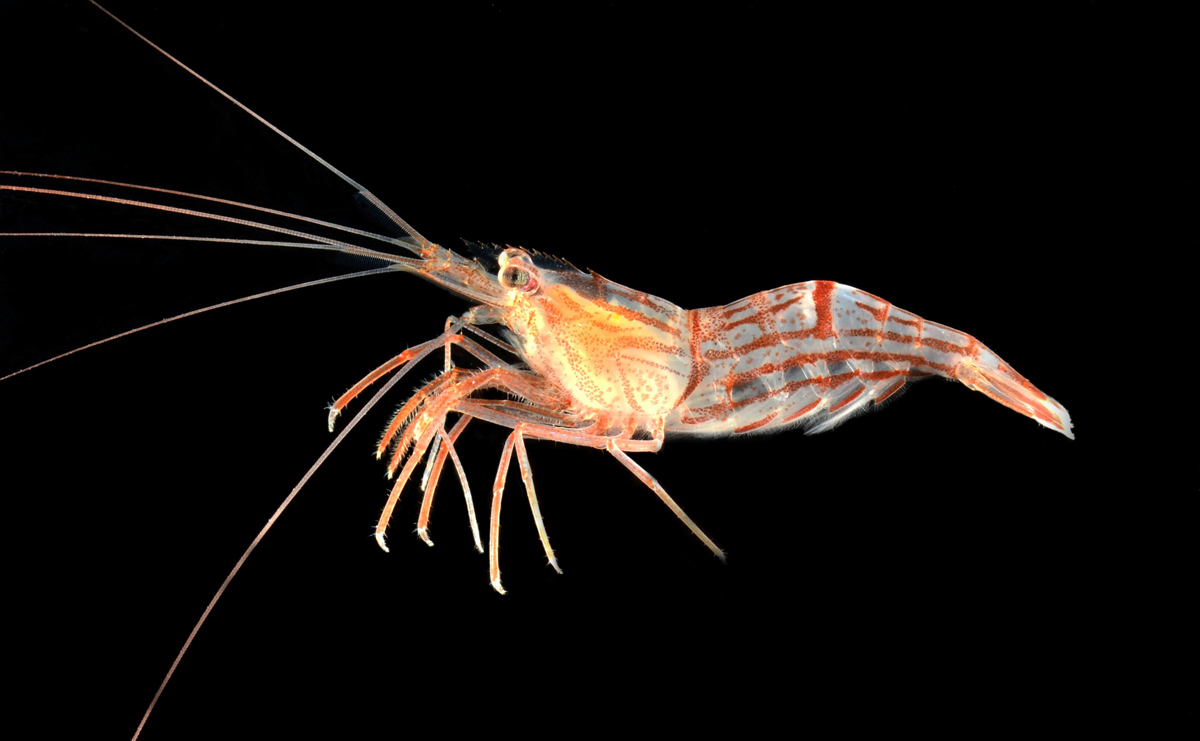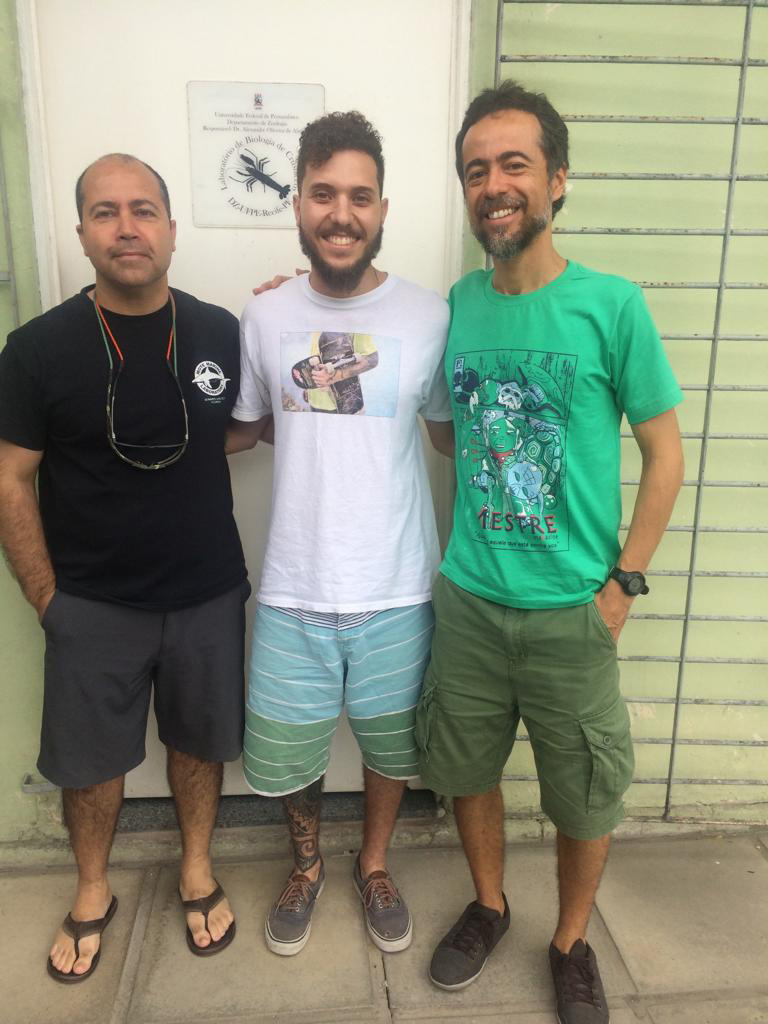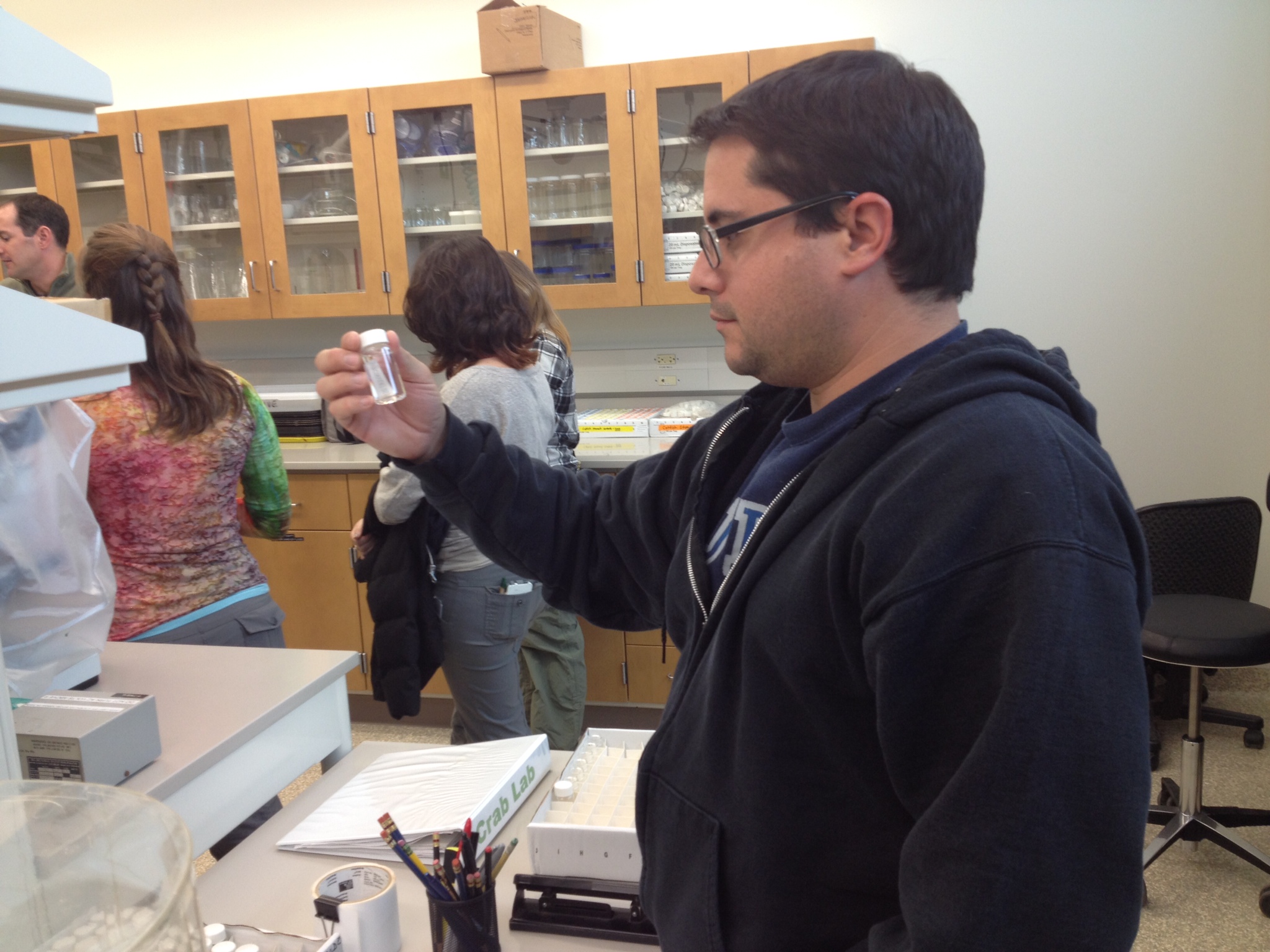by Jaylene Lopez
Peppermint shrimp appear in household aquariums worldwide as family pets. However, these unassuming little crustaceans hold the truth to a very important question: Do small differences in species really matter?
A team of ecologists from the Smithsonian Environmental Research Center (SERC) and around the world have made a breakthrough that may answer that question.
In a new study published this summer, Rodrigo Guéron, Rob Aguilar and a team of Smithsonian and international ecologists have resurrected the species Lysmata rauli, or “L. Rauli” for short. L. rauli is just one of several species of peppermint shrimp. Some are invasive to Chesapeake Bay and some are not.
Thanks to the aquarium trade and commercial shipping, several peppermint shrimp species have spread all over the world. In fact, there are so many species of peppermint shrimp that scientists don’t know how many there are specifically.
When scientists first found Lysmata rauli, they thought it was a separate species. Only later did it get downgraded into a synonym of Lysmata vittata. Scientists more recently thought Lysmata rauli and another peppermint shrimp, Lysmata vittata, were the same—up until 2021. SERC previously reported on this mix up. Ecologists have now concluded that L. rauli and L. vittata are separate, which officially revived Lysmata rauli as a fully-fledged species.

This conclusion would not have been possible without previous work by SERC technician Rob Aguilar, who had sought to understand the significance of these slight differences in shrimp.
“We were fairly certain that they were different,” said Aguilar. “It was just [a matter of] collecting enough evidence to provide a strong enough case to present to the scientific community.”
L. rauli is native to the Indo-West Pacific. It’s also made its way to Brazil, which happens to be the home country of Rodrigo Guéron, the study’s lead author. Unlike L. vittata, L. rauli has a more distinct crisscross pattern for its red stripes.
Do shrimp-sized differences matter? Well, knowledge is power.

L. vittata is nonnative to Chesapeake Bay. We learn about invasive species “to have a better understanding of the communities around us and biodiversity in general,” said Aguilar. Peppermint shrimp are social species. We don’t know the impact L. vittata and will have on the local Chesapeake ecosystem as it interacts with the Bay’s native peppermint shrimp, Lysmata wurdemanni.
Defining the differences between species can also help with conservation.
“Each species has intrinsic characteristics and biological needs,” said Guéron. If two similar but different species receive the same treatment, it can hinder the conservation of both. Their reproductive, nutritional, and physiological nourishment depends on their specific traits.
Recognition of their differences also gives us clues on where they are likely to invade.
“Both species are exotic to the Western Atlantic. But because of their uniqueness, they have established themselves in different regions of the Atlantic,” he said. “Lysmata rauli has records in Brazil and Panama, while Lysmata vittata has records in the Chesapeake Bay.”
Reviewing these records is no walk in the park! The team reviewed hundreds of biological documents from the end of the 1800s to the present day to unlock this secret. “All this, so that we could tell the whole story from the description of the species to the moment when they started to be treated, erroneously, as a single species,” said Guéron. To Rodrigo, this was the biggest hurdle in his research.
Are Several International Heads Better Than One?

Scientists in underdeveloped countries do critical work, but they often face severe limitations due to lack of funding. Developed countries, by contrast, often have more access to funds needed to make scientific breakthroughs. Since peppermint shrimp appear all around the world, there needed to be collaboration from international scientists to pool their data together.
“My first international collaboration happened back in 2015. At that time, I was an undergraduate student in Brazil, and I got a 16-month scholarship to study in the U.S.,” said Guéron. “For two months I was an intern in Dr. Antonio Baeza’s laboratory, where I met several researchers and there my international partnerships began.” Guéron’s current project is to investigate peppermint shrimp on the Brazilian coast with Dr. Baeza as his Ph.D. advisor.
Baeza connected Guéron to Rob Aguilar, who was working on his own project about L. vittata. That kicked off the duo’s partnership. “Aguilar had L. vittata material from the USA and we had L. rauli material from Brazil,” said Guéron. “Thus, we joined our efforts to develop this work. We were only able to obtain the impactful results like those of the published paper due to this fantastic teamwork.”
In their partnership, they investigated the identity of these two peppermint shrimp, which were confused for each other.
The complete impact of the invasive peppermint shrimp in Chesapeake Bay is unknown, for now. Ecologists like Guéron and Aguilar still need to do more research to know how much of a threat the invasive shrimp are to the native species.
Until then, remember to avoid releasing those cute peppermint shrimp pets into the ocean.
The following institutions collaborated on this research: The Smithsonian Institution’s DNA Barcode Network, Coordination of Superior Level Staff Improvement (CAPES/Brazil), Systematic Research Fund, The Environment and Conservation Fund Hong Kong, New Zealand Ministry of Agriculture and Forestry, and United States India Educational Foundation (USIEF).
A link to the study, “Delimiting species within the Lysmata vittata (Stimpson, 1860) (Decapoda: Lysmatidae) species complex in a world full of invaders,” is available on the journal Zootaxa‘s website at https://mapress.com/zt/article/view/zootaxa.5150.2.2.



